
Best of Ecuador cover page. |
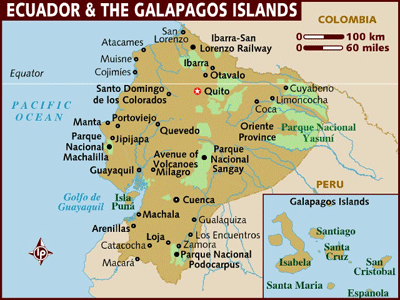
Map of Ecuador with the star indicating Quito. |
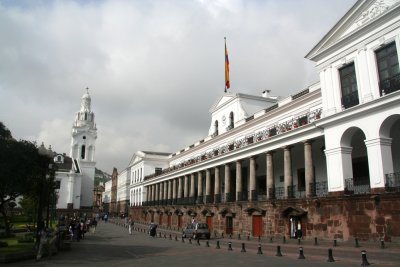
Plaza de la Independencia, or Plaza Grande, in Quito is flanked by the Presidential Palace where the president of Ecuador lives. |
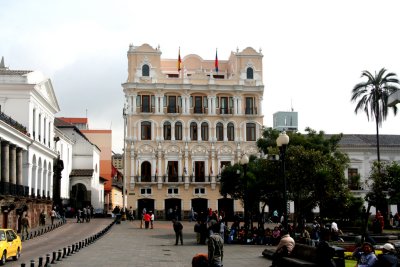
The Plaza Grande Hotel overlooking Plaza de la Independencia in Quito. It was Quito's first 5-star hotel. |

The fountain with pedestrians passing time in Plaza de la Independencia. |
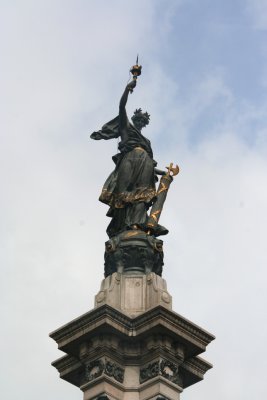
This is one of 3 statues of liberty in the world, the other two being in New York and Mexico City. |

Façade of the awe-inspiring Metropolitan Cathedral. Work began on it between 1550 and 1560. |
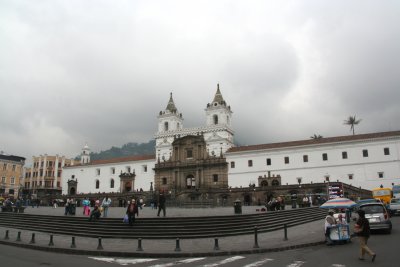
View of San Francisco Plaza with San Francisco Church in the background (the most imposing of Quito's architectural monuments). |

Close-up of El Panecillo. The Spanish artist Agustín of the Herrán Matorras made this aluminum monument in 1976. |
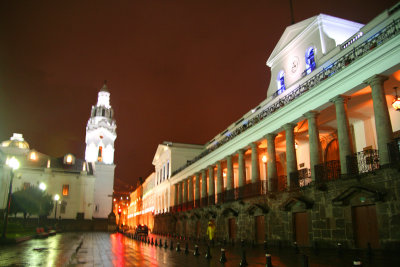
A rainy night photo of Plaza Grande with the Presidential Palace and the Metropolitan Cathedral steeple in the background. |
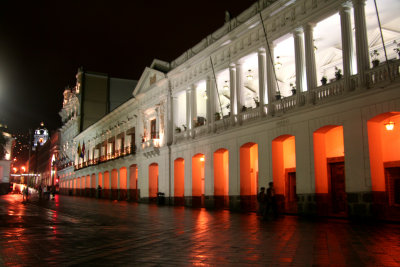
Evening lights reflecting from the Archbishop's Palace. |
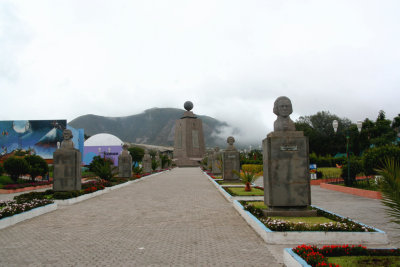
The Equatorial (Middle of the World) Monument, which was built in 1938 by French scientists to prove Newton's theories. |
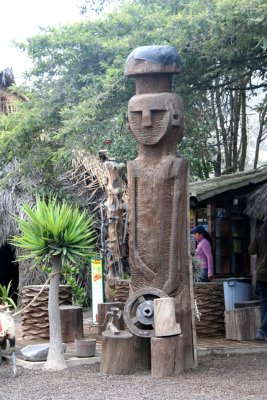
Close-up of the carved wooden statue by the indigenous (Quicha) people. |
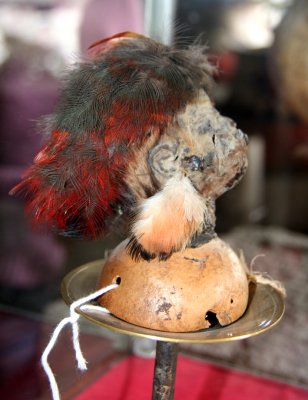
An authentic shrunken head at the Equatorial Museum. |

A Quicha wooden carving on display at the museum. |
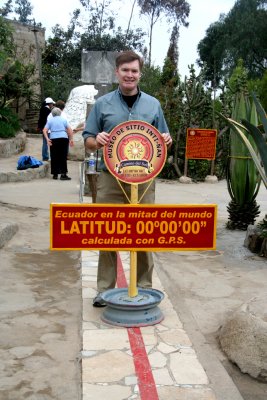
I am standing at the true center of the earth (proved by GPS) at the Equatorial Museum. |
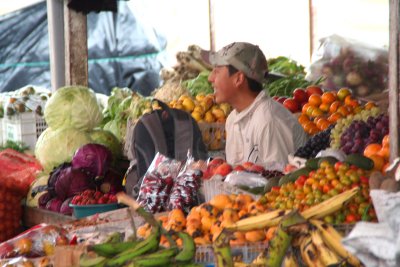
A fruit and vegetable vendor amongst his produce. |

Tourists disembarking from the Chiva Express train that took us through the Andes Mts. |

Ecuadorian "cowboys" greeting us at La Alegria hacienda, during a train stop on the Chiva Express. |

This cowboy opened a pen to let out alpacas and llamas into the corral. |
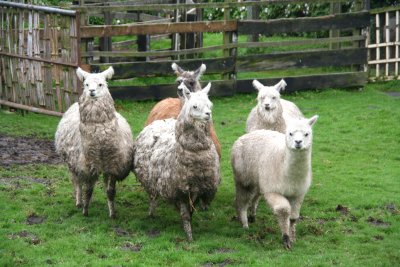
Alpacas and llamas running into the corral. |
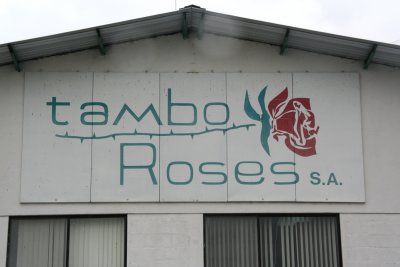
Tambo Roses produces and exports a great number of rose varieties that are shipped all over the world. |
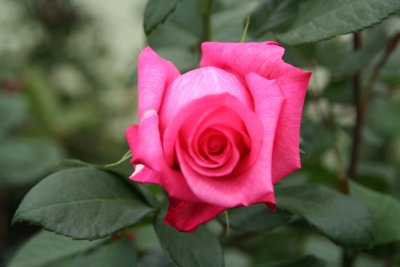
Another gorgeous rose that was blooming at the rose farm. |

Bunches of roses in a multiple colors to be shipped out for Valentines Day. |
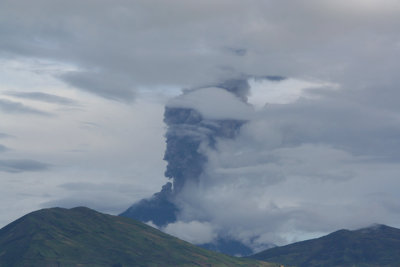
Ash billowing from the volcano. |
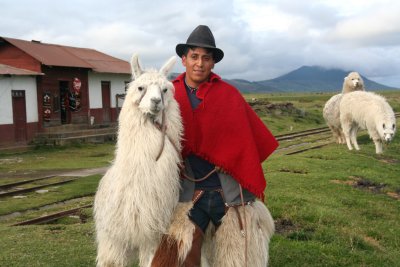
This Ecuadorian man in alpaca chaps posed with an alpaca. |
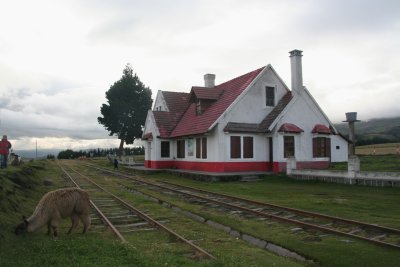
A bucolic photo of the Taller de Tagua gift shop, which is next to the train tracks. |
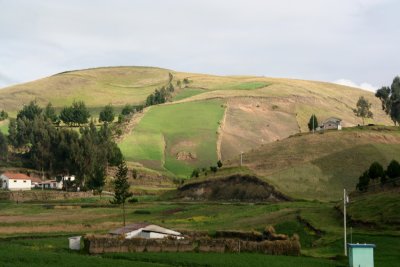
The landscape is very verdant because it rains a lot there. |
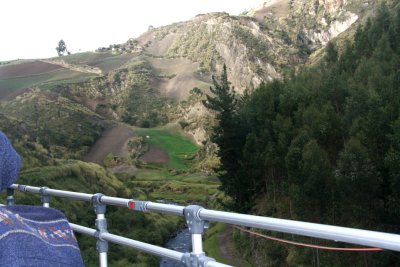
View from the top of the Chiva Express. It was becoming more mountainous. |

A produce truck was being unloaded at the Indian market. |

School children in Guamote lined up along this fence before the Chiva Express pulled away. |

The train made an unscheduled stop, because of a mudslide that made the tracks impassable. |

Me standing on the back of the Chiva Express at the Alausí train station. |
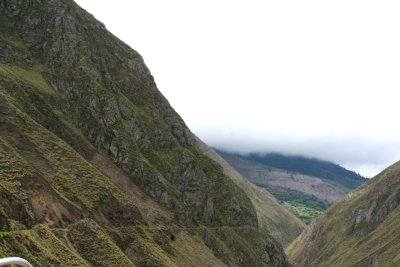
View of Devil's Nose. Construction of the switchbacks there was one of the world's most impressive feats of rail engineering. |

View while we passed along the precipitous rock wall of Devil's Nose. |
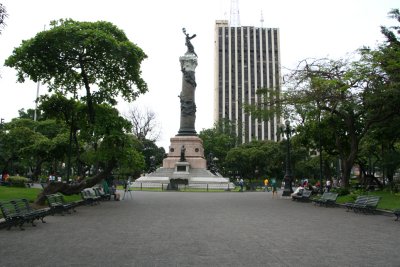
View of Centennial Park, which commemorates Guayaquil’s independence on October 9, 1820. |
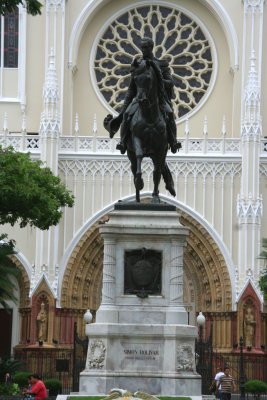
Statue of Simon Bolivar who was a patriot, statesman and liberator of five South American Republics including Ecuador. |

The iguanas were there before the park, because prior to it being a park, it was a mangrove. |
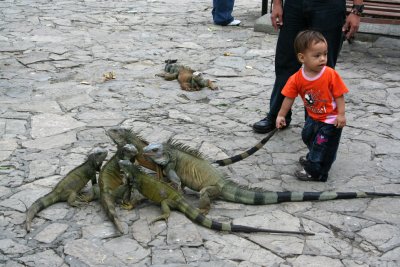
This little boy was hanging onto the tail of one of his new friends! |
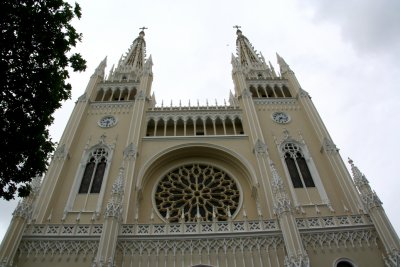
The current neo-Gothic Metropolitan Cathedral was completed in 1948. It has impressive stained glass windows and a marble altar. |
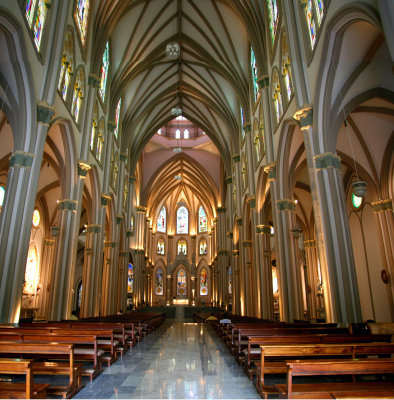
Composite photo of the Gothic interior. |
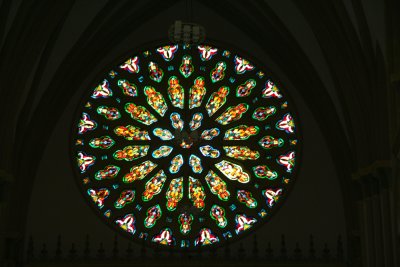
The spectacular front stained glass window in a Rosetta pattern. |
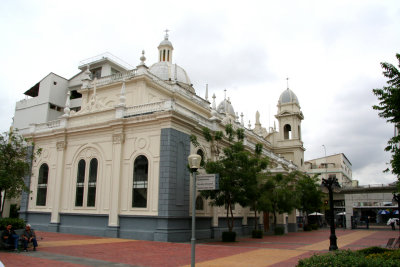
View of San José Church in Plaza de la Integración in Guayaquil. |
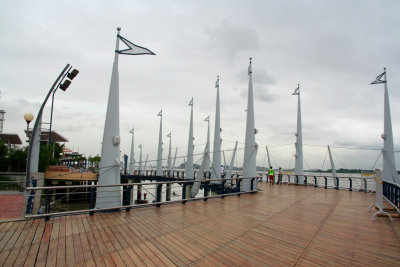
In 1931, they filled part of the river. It is now part of Malecón 2000, an urban renewal project with the pier and boardwalk. |
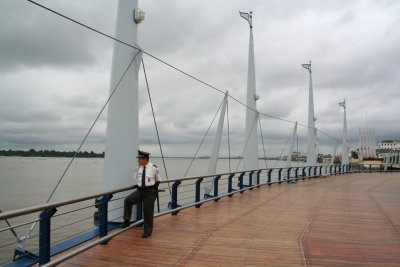
This policeman was on duty on the pier. |
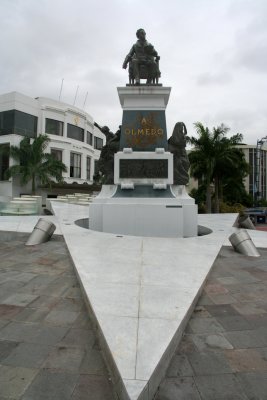
An interesting vantage point of the Olmedo statue. |
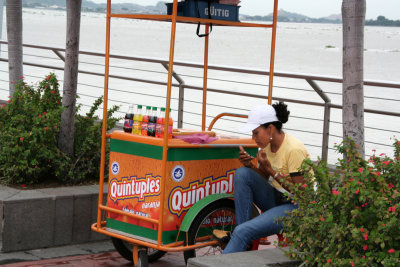
One of many vendors along the promenade. |

The Moorish Clock Tower was inaugurated in 1842 following the worst yellow fever outbreak ever in Guayaquil. |
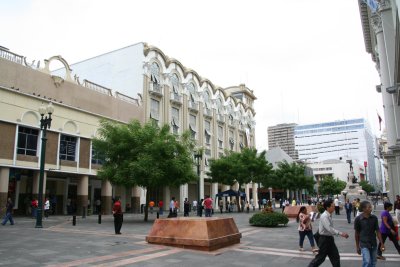
Administration Square with a building built in the 1950's, which is part of City Hall. |
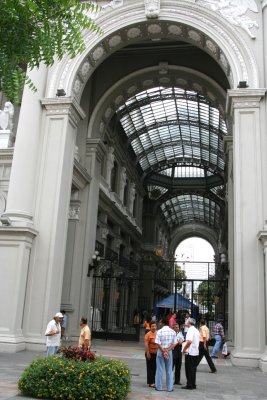
Note the arched glass roof of this Italian-style part of City Hall. |

Kids playing by a fountain in Administration Square. |
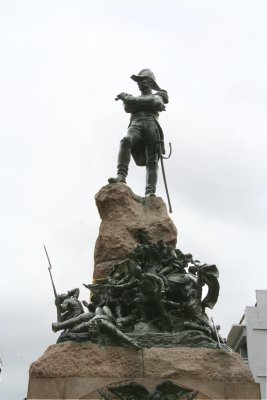
Sucre was in charge of the campaign to liberate Quito and won a decisive victory at the Battle of Pichincha in 1822. |
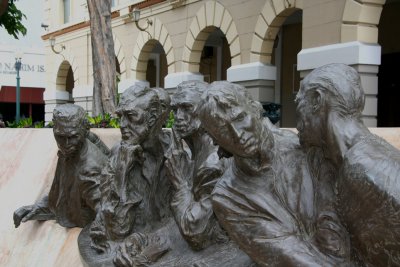
Close-up of some of the conspirators who tricked the Spanish. |

Strollers along the pier, which is part of the Malecón 2000 urban renewal project. |
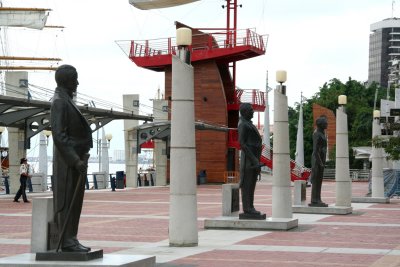
Along boardwalk are statues of Presidents of Ecuador who came from Guayaquil. |

View of the main monument of Malecón, which was dedicated in 1936. |
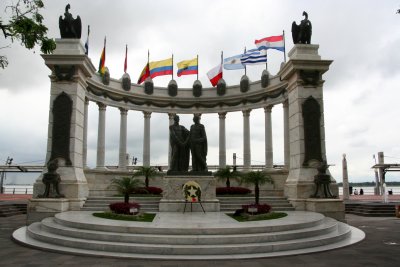
It commemorates the meeting of Simon Bolivar and San Martin to declare independence from Spain. |

Since Simon Bolivar (on the left) was so short, the sculptor made him much taller so he would equal St. Martin's stature! |

Santana Hill is one of the oldest parts of Guayaquil where the city was first established. |

The old wooden houses are now being painted in bright cheerful colors giving the neighborhood its charm. |

Another cemetery view. The graves are above ground because Guayaquil was built on a mangrove. |

Sculpture of a fisherman in Guayaquil. Too bad the Guayas River is so polluted! |











